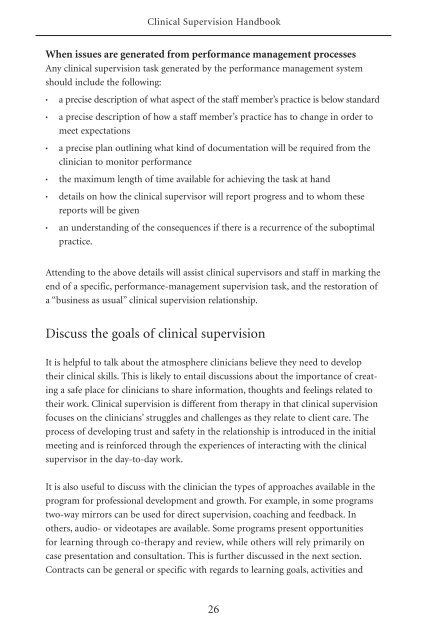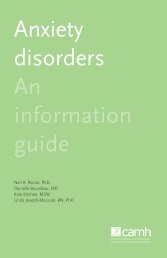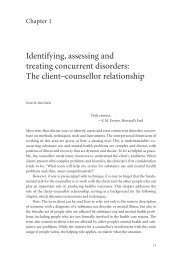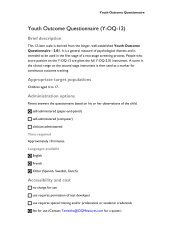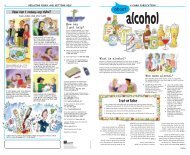Clinical Supervision Handbook - CAMH Knowledge Exchange ...
Clinical Supervision Handbook - CAMH Knowledge Exchange ...
Clinical Supervision Handbook - CAMH Knowledge Exchange ...
You also want an ePaper? Increase the reach of your titles
YUMPU automatically turns print PDFs into web optimized ePapers that Google loves.
<strong>Clinical</strong> <strong>Supervision</strong> <strong>Handbook</strong><br />
When issues are generated from performance management processes<br />
Any clinical supervision task generated by the performance management system<br />
should include the following:<br />
• a precise description of what aspect of the staff member’s practice is below standard<br />
• a precise description of how a staff member’s practice has to change in order to<br />
meet expectations<br />
• a precise plan outlining what kind of documentation will be required from the<br />
clinician to monitor performance<br />
• the maximum length of time available for achieving the task at hand<br />
• details on how the clinical supervisor will report progress and to whom these<br />
reports will be given<br />
• an understanding of the consequences if there is a recurrence of the suboptimal<br />
practice.<br />
Attending to the above details will assist clinical supervisors and staff in marking the<br />
end of a specific, performance-management supervision task, and the restoration of<br />
a “business as usual” clinical supervision relationship.<br />
Discuss the goals of clinical supervision<br />
It is helpful to talk about the atmosphere clinicians believe they need to develop<br />
their clinical skills. This is likely to entail discussions about the importance of creating<br />
a safe place for clinicians to share information, thoughts and feelings related to<br />
their work. <strong>Clinical</strong> supervision is different from therapy in that clinical supervision<br />
focuses on the clinicians’ struggles and challenges as they relate to client care. The<br />
process of developing trust and safety in the relationship is introduced in the initial<br />
meeting and is reinforced through the experiences of interacting with the clinical<br />
supervisor in the day-to-day work.<br />
It is also useful to discuss with the clinician the types of approaches available in the<br />
program for professional development and growth. For example, in some programs<br />
two-way mirrors can be used for direct supervision, coaching and feedback. In<br />
others, audio- or videotapes are available. Some programs present opportunities<br />
for learning through co-therapy and review, while others will rely primarily on<br />
case presentation and consultation. This is further discussed in the next section.<br />
Contracts can be general or specific with regards to learning goals, activities and<br />
26


